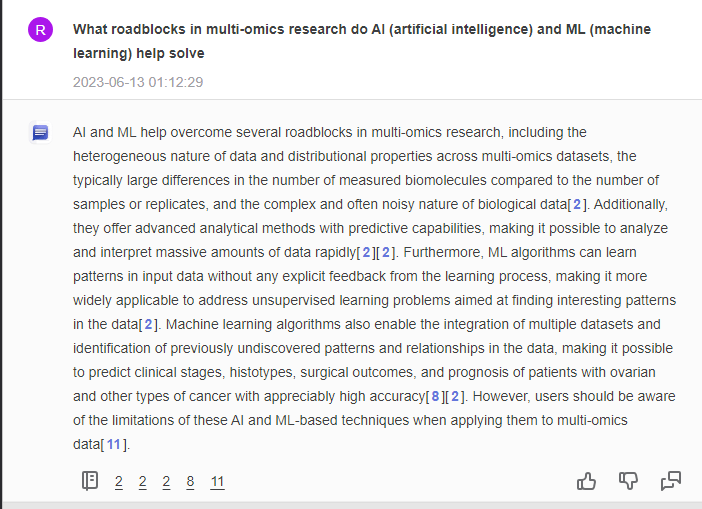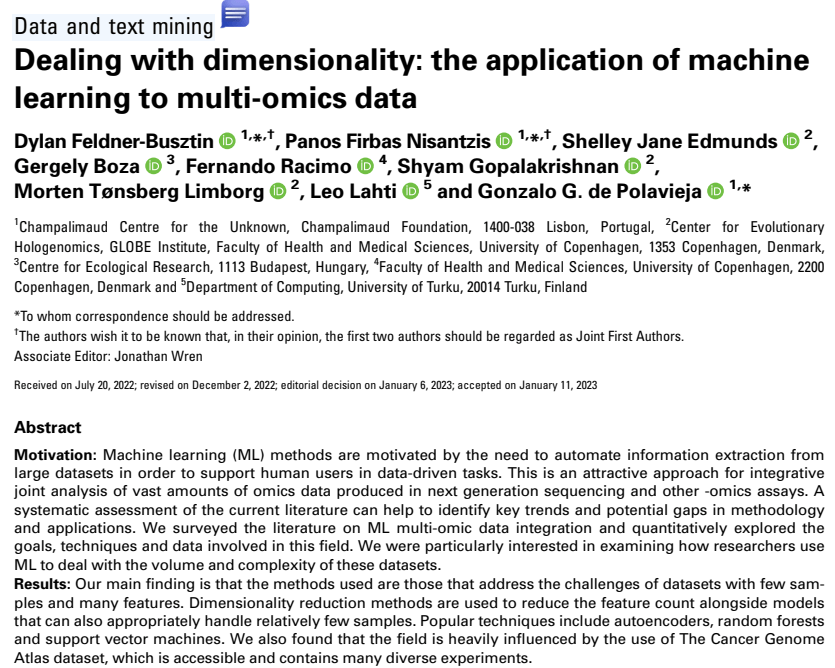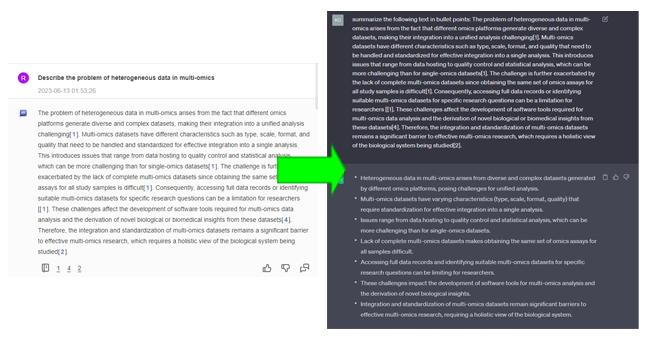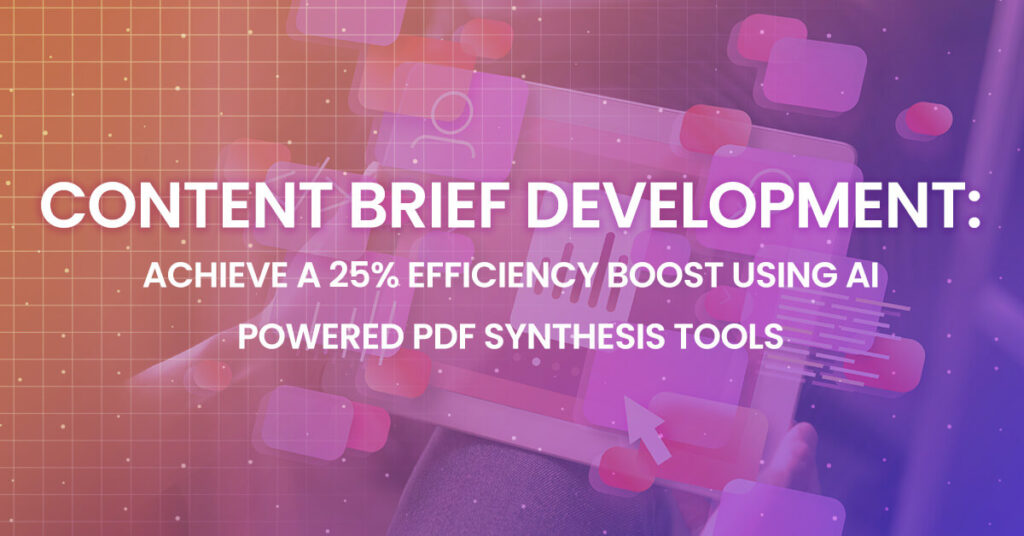Abstract: Doing research for blog posts typically takes an excessive amount of time to read and synthesize recent scientific literature, and ensure information is up to date and accurate. Sciencia was tasked, with limited time and resources, to develop a blog post regarding multi-omic data and advancements made in high complexity data analytics with AI and ML tools. In order to achieve this goal, we analyzed the utility of the tool ChatDoc to extract relevant information from literature in the development of a content brief on streamlining multi-omic data interpretation using AI. A procedure was developed around the combination of ChatGPT and ChatDoc that resulted in a streamlined content brief synthesis saving several hours in research time.
Method: Several phases of content brief development were tested and optimized including idea generation, paper discovery, and paper synthesis with the objective of streamlining the time saving value of ChatDoc into an efficient and reproducable process.
Figure 1: The timeline provides a visualization of content brief development, comparing traditional methods against the AI driven process. The AI driven process saves 30 minutes of the hour previously spent on idea generation and an hour of the two hours previously spent on Paper Synthesis.

Idea Generation (Time 30 mins): ChatGPT was used to generate and structure ideas for the content brief. Think of a set of open-ended questions or prompts related to your chosen topic. These questions will serve as the starting point for your conversation with ChatGPT. Engage in a conversation with ChatGPT: Use the prompts you prepared to start a conversation with ChatGPT. Pose your questions one at a time, allowing the model to provide detailed responses. You can have a back-and-forth conversation, asking follow-up questions to delve deeper into specific subtopics. The accuracy of the information here does not matter and simply will serve as a tool to guide the conversation in ChatDoc which should provide more up to date and accurate information. Finally ask ChatGPT to generate a blog post outline using the topics discussed.
Paper Search (Time: 30 mins) The research papers were sourced through the utilization of the Google Scholar search engine, employing relevant keywords aligned with the content brief. To ensure the attainment of high-quality and pertinent articles via Google Scholar quickly and efficiently, it is imperative to adhere to effective search practices. One should strive to refine search queries by employing specific key terms, and making use of quotations when necessary, enhancing the relevance of the results. Additionally, making use of the advanced search features offered by Google Scholar enables the narrowing down of results based on fields, publication years, and the exclusion of certain terms. Furthermore, exploring the related articles section and leveraging the “Cited by” feature facilitates the discovery of supplementary sources closely associated with the original query, as well as more recent research on the same subject matter. Lastly, it is vital to evaluate the credibility and relevance of the sourced material by assessing factors such as article quality, author expertise, journal reputation, peer review, citation count, and the alignment of content with the research topic.Figure 2: A sample of 13 papers were found using google scholar and uploaded to ChatDoc. ChatDoc used 9 of the 13 papers in its response to guided questions to complete the content brief.
Synthesis: (Time 60 minutes) Very general questions were first asked to ChatDoc to fill out the outline generated by ChatGPT (Example Question Below). When key terms came up that could have value for deeper understanding (example: problems with Heterogeneous Data), ChatDoc was prompted to expand more on these ideas. Flexibility with the outline is key in achieving good results, when new ideas pop up that were not initially present in the outline, new directions for the content brief may be found. Due to poor writing quality, ChatGPT was used to rewrite and condense responses into the final content brief.

Overcoming Challenges Associated With ChatDoc
AI & Prompting Bias:
Problem: The AI’s selection of papers to generate a response is biased towards those that align closely with the prompt, even if other papers in the folder contain valuable information. The criteria for paper selection are unclear, potentially leading to arbitrary exclusions.

ChatDoc failed to draw from papers with relevant information. For example, a relevant paper identifying specifically the “dimensionality” of multi-omics data as a roadblock was ignored instead using less informative terms such as “complexity” of the data used in other papers. This was possibly due to oversaturation of papers with a potential response to the prompt leading to an arbitrary sampling process.
Solutions: To ensure inclusion of specific papers, exclusively prompt the AI using the desired paper when necessary. Further, prioritize quality over quantity of paper in the sampling selection.
Response Quality:
Problem: AI responses are often linguistically low in quality, often just regurgitating information. Additionally, responses are often not concise.
Solution: To improve response quality, condense answers into bullet points using ChatGPT and request tone changes or further rewriting.

ChatDoc is a valuable time-saving tool for extracting information from individual PDFs
Synthesizing research papers through AI tools is a new and rapidly improving time saving mechanism that may cut hours from research time. However, one must be aware of any limitations. These tools may result in overall lower comprehension of papers and the loss of nuanced idea generation and interpretations that may come from reading through literature. Analyzing multiple PDFs simultaneously increases time savings but amplifies the risks. Nonetheless, the time-saving capabilities of ChatDoc remain unmatched.
Future Directions
The digital tool landscape is rapidly evolving with tools emerging for almost any use case. Further research should be done regularly to keep up to date with future synthesis tools and updates to current ones. Additionally, alternatives to google scholar were not assessed and new and emerging digital tools may improve the quality of research papers obtained. Digital tools such as Elicit may aid in efficiently finding recent, relevant and reputable papers that may otherwise be missed. New tools should constantly be assessed for ease of use and quality of outputs, and new workflows should be developed around these tools to generate the best content most efficiently.




